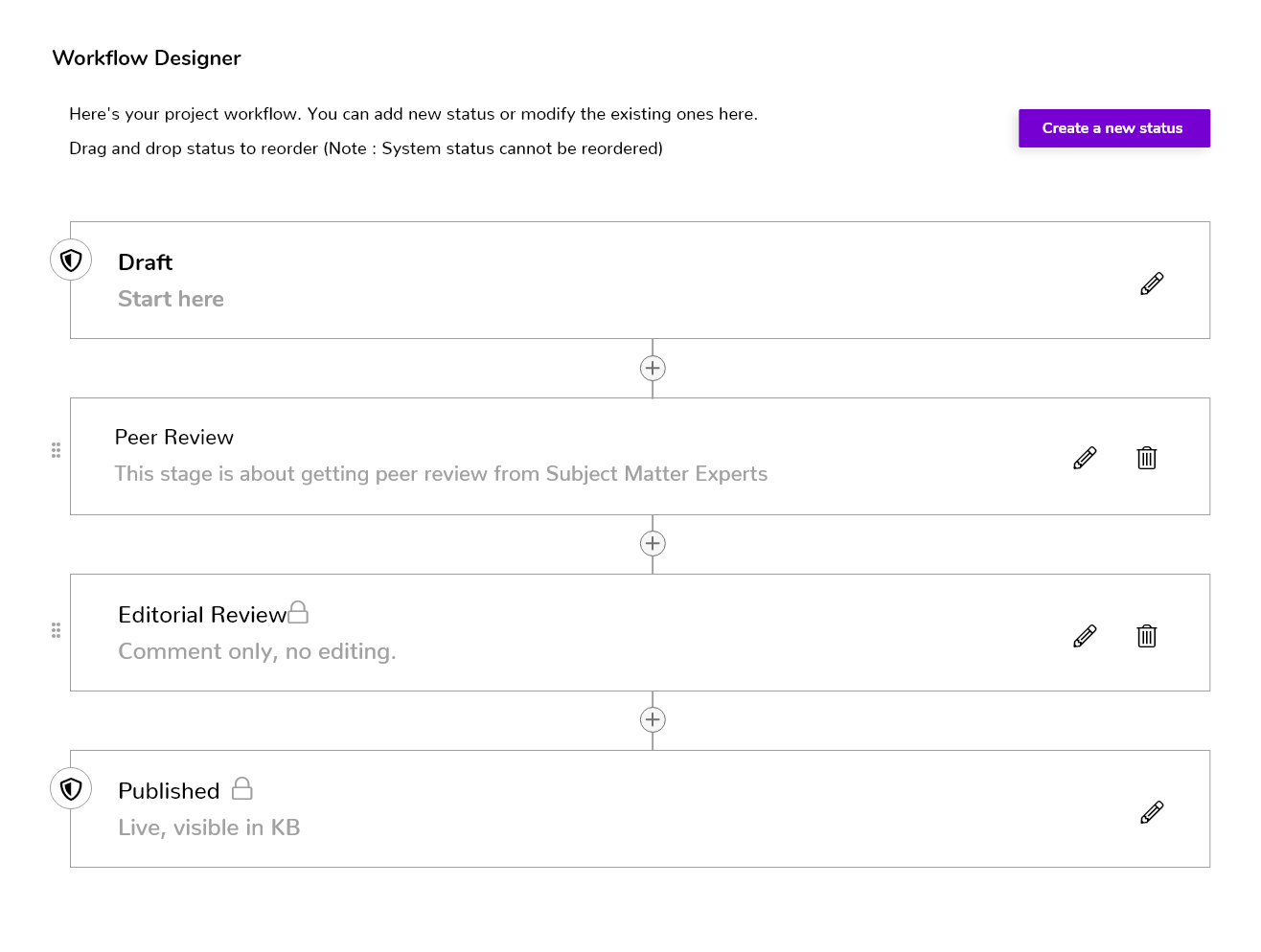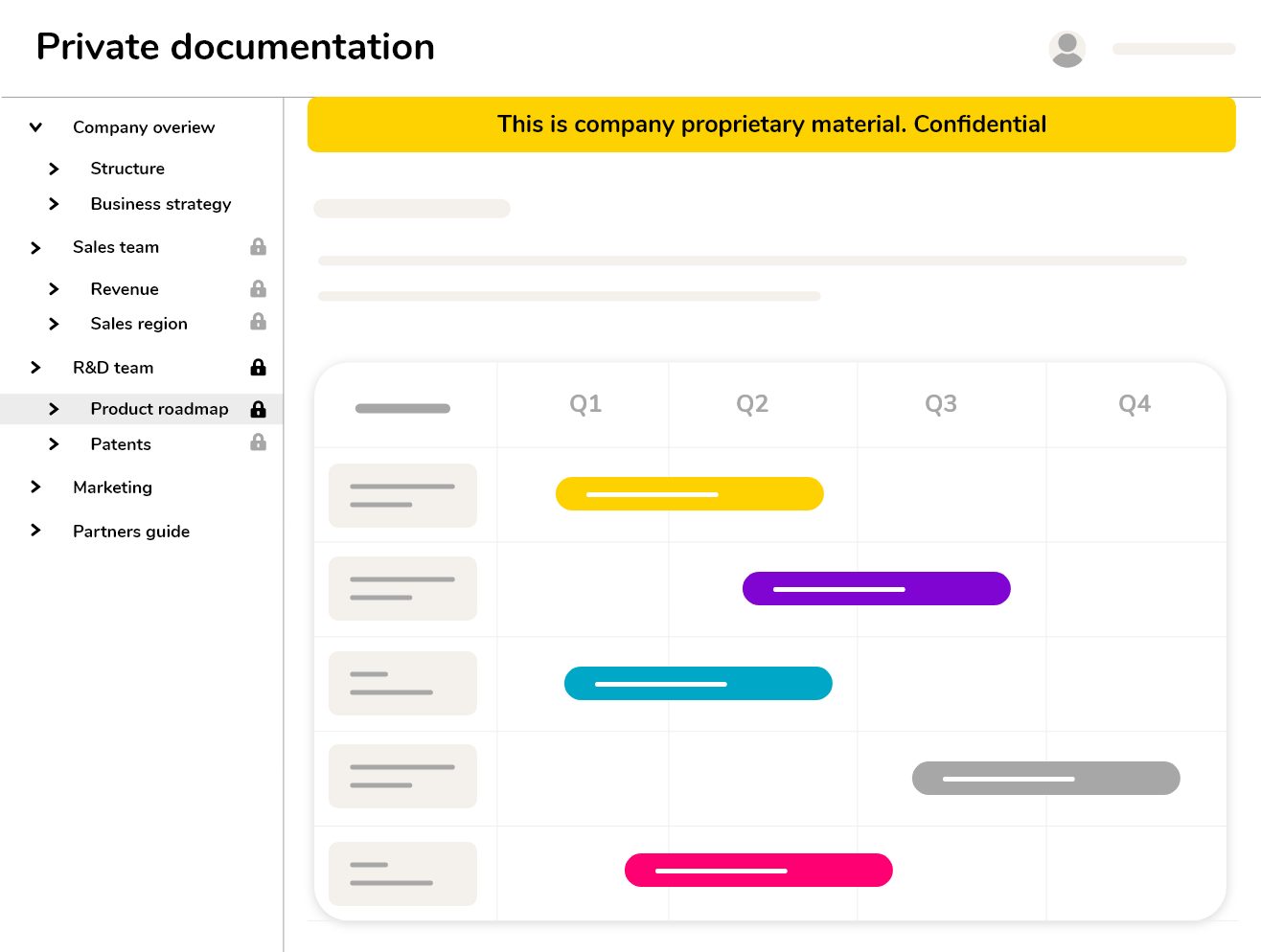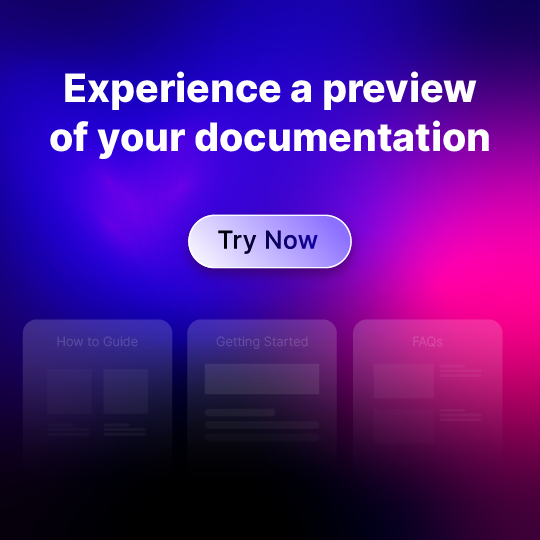Roughly 67 million people live in the UK and all of them will be involved in the health sector at some point in their lives. The healthcare sector relies heavily on knowledge in its daily activities, and mainly, the delivery of care depends upon the collaboration of various partners that should share knowledge in order to provide quality outcomes for patients.
Treating an individual patient is dependent on accessing a huge amount of knowledge and expertise, and healthcare providers must not only share clinical knowledge but also standard operating procedures. Information is constantly changing as the medical field evolves, with new research published and as new treatments become available.
Why do you need healthcare knowledge management?
The short response is “Doctors and medical personnel are overloaded”. The paradox is that healthcare workers are inundated with information, yet they struggle to discover it. Balance this against the fact that finding the right information at the right time can quite literally save lives.
Imagine you are a doctor and you can see dozens of patients a day. Doctors base their decisions on personal knowledge and the limited patient data in front of them.
There’s no time in a patient’s appointment to track down another doctor, who are probably all busy with their own patients. In a scenario where a patient comes to their doctor with symptoms that are perplexing, the doctor makes an educated guess as to what may be wrong and writes a treatment plan for the patient.
It would be much better if the doctor not only had his or her own knowledge to help the patient, but access to the knowledge of every other medical professional in the hospital. When it comes to the patient who is presenting a perplexing set of symptoms, it’s likely that another doctor has seen this before and can advise on next steps.
This is where healthcare knowledge management comes in. Doctors can use it to search for symptoms and other valuable data that will make a huge difference to outcomes for their patients.
Many businesses are already using knowledge management systems to organize, store, and share knowledge between employees and boost operational efficiency. These systems are increasingly being used by healthcare organizations to raise the standard of care for patients.
Access to the right knowledge in healthcare is paramount – a patient’s life could depend on it. Knowledge management systems improve collaboration between practitioners and boost the availability of knowledge throughout the organization.
Importance of knowledge management in healthcare
Knowledge is capital for the healthcare sector. It is an intangible asset that may not appear in market value but help to improve and build a powerful organization. However, having too much knowledge is overwhelming for employees and they won’t know where to start looking for answers.
It’s crucial to organize this knowledge in such a way as to make it manageable for your practitioners. The knowledge that is not accessible is of no use to anyone.
KM can be seen under two dimensions- internal knowledge management for healthcare workers to understand protocols, new studies, and research, documentation on processes, and procedures. Another one is to help serve patients with better knowledge of customers, knowledge about customers, and knowledge from customers.
Check out our video, AI-Powered Healthcare Knowledge Base:
Benefits of knowledge management in healthcare
The use of knowledge management in healthcare has many benefits. We’ll go through some of them now.
Avoid malpractices
When knowledge is properly documented and practitioners know to follow established procedures, this helps avoid medical malpractice. When practitioners can adhere to step-by-step processes this reduces the chance of error and enables them to deliver a higher quality of care. Since they have access to the knowledge of other practitioners, there are, as a result, fewer misdiagnoses.
Informed decision making
When employees have better access to information, they can make more informed decisions when it comes to patient care. Practitioners aren’t just making decisions based on their own experience, but they can learn from the knowledge of others. They know they have access to the most up-to-date knowledge that has been recorded by their fellow practitioners based on their extensive experience in the healthcare field.
Educate and empower medical practitioners
Knowledge-sharing promotes the education and empowerment of medical practitioners who can learn from the collective wisdom of the practice. When employees are empowered to learn from the latest information available in the field they deliver better care and patient outcomes are improved. Patient diagnoses go from guesswork to reliance on the latest data defined by their colleagues.
Capture tactical knowledge gained by practitioners
When knowledge management software is used properly, it can capture practical knowledge gained by practitioners and promote a culture of continuous learning. The expertise can be made available to everyone in the practice who can apply that learning to their dealings with patients.
Also read: What is Tacit Knowledge: Importance, Benefits & Examples
Boost operational efficiency
When you make knowledge available to all you stop your employees from reinventing the wheel every time. Whatever question comes up has surely already been answered before by someone in the organization, and knowledge management systems can help to document solutions. Practitioners can learn from the past experiences of others and boost operational efficiency as a result.
Improve patient satisfaction
When your practitioners are more effective this leads to better outcomes for patients, who are more satisfied with the service they received. The whole point of knowledge management is to keep the patient at the heart of everything that happens in the organization and to deliver a better service as a result.
Leads to digital transformation
Healthcare organizations have already made the transition from paper record-keeping to electronic medical records. The change doesn’t stop there with the adoption of digital systems that lead to improved patient care, and better efficiency and productivity.
A healthcare knowledge base is a crucial part of healthcare organisations meeting their digital innovation goals and it doesn’t have to be a painful process. Healthcare workers can collaborate more efficiently, leading to enhanced patient outcomes. The solution should offer robust search, and integrate with other apps, in order to fit into the provider’s existing workflows.
Promotes collaboration between healthcare workers
Instead of using paper files that are easily lost or damaged, patient medical records are now stored almost universally in an electronic format. It’s easy for doctors to search for files, make updates, and share records. It’s much more efficient and protects patient/doctor confidentiality.
A knowledge base is a secure way to share information about patients while honoring patients’ privacy. Medical professionals can collaborate on sharing symptoms, treatments, and other information while keeping individual patient records confidential.
Also Read: Guide to Improve Healthcare Process
Implementing a new knowledge base
1. Evaluate your needs and pain points
A plan is required before embarking on the journey of adopting a new knowledge base. Just like you wouldn’t set out on a journey without a roadmap, healthcare organizations should decide on key problems and opportunities that are driving the need for new technology. Decide how to define ‘value’ in your organization. Ideally, a new digital solution is going to cut costs for the team and drive benefits for users, outweighing the initial investment in technology.
2. Assemble a team of diverse stakeholders and experiences
A new technology is going to affect everyone. An interdisciplinary team can come together and troubleshoot ideas before the project is presented to the executive leadership level. Especially as mergers and acquisitions continue to affect the healthcare space, a diverse stakeholder team can ensure that digital transformation efforts are rolled out the same way across newly combined systems.
3. Balance your objectives for success
When choosing your new knowledge base, you should evaluate your objectives. These objectives should be people, process, and technology. You must identify individuals who are responsible for delivering and receiving services, address security and usability, and adopt new tools to improve service delivery for patients and staff. This three-pronged approach can work for projects of any size.
4. Prepare yourself for roadblocks
Change takes time and there will inevitably be problems in the way. Transitioning from legacy systems is not easy and people are often resistant to change. Don’t forget to focus on the small wins and their role in bringing about the larger end goal.
Features of knowledge management tools in healthcare
Now we’ll go through some popular features of knowledge management tools that you might use in healthcare.
Search and navigate

Your knowledge management tool should contain a search bar that makes it easy for your practitioners to find information in the knowledge base. It should return the search results in seconds and predict what users are going to type as they input a search term. The results should include keywords in the body of the article as well as the title, and sort results by relevance.
Interactive knowledge base
Your knowledge base should be interactive for users containing videos and images that bring the content to life. Your users should be able to leave comments and participate in discussions around the content, enabling practitioners to feel that your knowledge management system is the hub of a community.
Knowledge in the flow of work

Your knowledge management system should fit seamlessly into your workflows. It should be incredibly effortless for practitioners to add content and revise existing content. The system should be easy to use and as normal as using a word processor. Your practitioners must be able to justify taking time out of their day to work on knowledge management and the key to success is a powerful and yet simple knowledge management system.
Categorization

Your knowledge should be organized in sensible categories that help users to navigate through the knowledge base when they are browsing for information. Your categories shouldn’t go too deep or it will be hard for practitioners to find what they’re looking for. You should be able to rearrange your categories using a drag-and-drop interface, so you can reorganize your knowledge base with a few mouse clicks.
Customization
It should be quick to customize your knowledge base to fit your company’s branding, changing the colors and fonts to suit your style guide. You should be able to choose from a wide variety of templates to tailor your knowledge base to your needs.
Private documentation

You should be able to make your documentation private, so that it is accessible only with login details or through a particular range of IP addresses. This means that no one has unauthorized access to your content and you can also keep confidential details private.
Organization-wide deployment
Your knowledge base should be deployed throughout the organization so that everyone has access to your content. You can promote your knowledge base through email and team collaboration tools so everyone is made aware of its existence. You want to encourage the use of the knowledge base in order to deliver effective knowledge management.
Integrations and extensions
Your knowledge base should integrate with other popular apps such as your team collaboration tools and your help desk system. These extensions improve the usability of your knowledge base and allow for seamless transitions between tools.
An intuitive knowledge management software to easily add your content and integrate it with any application. Give Document360 a try!
Get Started
Challenges that limit KM implementation in healthcare?
Sometimes, it can be hard to implement KM initiatives. We’ll look into some reasons why.
Lack of leadership
The delivery of knowledge management in healthcare should be backed by the support of the leadership team. Without management approval, KM initiatives will struggle to get off the ground and they won’t result in adoption by your entire body of staff. It should be down to senior management to set the example of knowledge sharing and encourage the rest of their team to follow suit.
Organizational culture
Sometimes you may run into friction at a culture level, which means it takes a long time to implement any KM initiatives. You may lack resources needed to launch knowledge management, and employees may have conflicting goals which make it hard to get started with KM.
Lack of organizational structure
Knowledge management relies on having a strong organizational structure that enables employees to find their role in the dissemination and consumption of knowledge. Without proper structure in place, employees are confused about the roles they should play and knowledge management initiatives will fail.
Limited tech infrastructure
Some healthcare organizations will have limited technology infrastructure which makes it hard to deploy digital knowledge management systems. Knowledge management is technology-intensive and requires the skills of individual workers to be able to launch initiatives.
If you choose the right knowledge management tool, it can be available on a subscription-based service that requires only an internet connection, so it is within reach for teams with only the most basic infrastructure.
Lack of methodology
Without a clear methodology in place for collecting and storing knowledge, your knowledge management initiatives will stall. You need to have a solid plan and designate the right people to manage your knowledge systems. The right procedures should be followed in order to facilitate the sharing of knowledge.
Lack of knowledge management strategy
Knowledge management needs to be backed by a solid strategy, and without one initiatives are left being directionless and aimless. The strategy needs to take into account people, processes and tools in order to be successful. You should have someone leading the strategy and organizing others who need to be involved.
The attitude of physicians and staff toward KM
It might be hard to implement knowledge management if the attitudes of your physicians and other staff are hostile. They may not be inclined to share knowledge and your culture may reward knowledge hoarding instead of sharing. Staff can be resistant to the changes that need to be made and may not appreciate being asked to work in new and different ways.
Also, check out our article: Medical Device Documentation
Knowledge Management Best Practices for Healthcare
Virtual discussion forums
You should encourage employees to have conversations with one another in virtual discussion forums. They can share knowledge and knowledge management best practices. Discussion forums will increase engagement and have staff feel more invested in your knowledge management system.
Peer review and collaboration
All content that is created in your knowledge base should be peer-reviewed for accuracy. No one should be posting in your system without having their work reviewed first, so content has to be created in a collaborative manner. Your knowledge base should have features in it that allow for a rigorous editing process and lets you assign different roles to your users.
Collect feedback
Knowledge management in healthcare is an ongoing process. In order to check you’re going in the right direction, it’s vital to collect feedback from practitioners on the quality and helpfulness of the content. Feedback can be as simple as asking your users to rate the helpfulness of the page they’re on, to collecting qualitative feedback through forms, comments and surveys.
Knowledge map
A knowledge map is a visual representation of all the knowledge contained within your organization. It also helps identify those individuals who have relevant expertise and where they can be found. Using knowledge mapping is a vital tool in your knowledge management strategy.
Measure the metrics
Use the metrics within your knowledge base software in order to track performance. For example, you can use metrics to track author, article and category performance. You can determine which articles are performing well, which need revisions, and which are the most searched by users. You can identify which authors are contributing the most-viewed articles, and also find which search terms don’t return any results, giving you ideas for new content.
Also, check out our article on Knowledge Management Metrics
Make knowledge easily consumable
When you publish your content on your knowledge base you need to make it easily consumable by your employees. Write in an accessible, down-to-earth way, include images and videos, and split your articles up into subsections. Try to stay away from medical jargon and communicate in a way that anyone can understand.
Scale knowledge sharing
Set up your knowledge management system to empower your employees to share knowledge at scale. All employees should have access to your knowledge base and the ability to create content ready to be consumed by other employees. Incentivize your employees to share knowledge with prizes or other rewards.
Also Read: Create Standard Operating Procedures for Clinical Practice
Use cases of Document360 in healthcare
Document360 is top knowledge base software for organizations in the healthcare sector. It’s very easy to use and get set up with, and you can be away creating your documentation within minutes.
Document360 is totally customizable, in-built with knowledge base themes that you can use to style your website. You can add a favicon, choose the layout, logo, colors and font family. You can make a knowledge base that perfectly fits in with the branding guidelines of your organization, that looks professional, and is a joy to use.
A state-of-the-art editor is built into Document360 which makes creating content a breeze. Document360 supports different versions of articles so you can easily revert back to a previous version if needed. Document360 enables complex collaborations on articles and reduces the risk of version conflicts.
You can extend the functionality of your Document360 knowledge base by integrating with some of the most popular apps out there, such as Slack or Microsoft Teams. You can create content within an external app and publish it to your Document360 site without leaving the interface. Document360’s extensions and integrations streamlines the publishing process, making it easier to create content than ever.
Conclusion
Knowledge management plays a vital role in healthcare, promoting better collaboration between practitioners and improving patient outcomes. Knowledge management is vital in retaining the collective wisdom of your employees and ensuring it is captured for posterity.
Practitioners will find it easier to do their jobs and feel happier in their work. Processes will be simpler to follow and lead to a more consistent standard of care. Knowledge management can only take place with an effective software solution underpinning it. Consider Document360 for your healthcare organization and start your knowledge management process today.
Frequently Asked Questions
-
What is knowledge management in healthcare?
Knowledge management (KM) in healthcare involves collecting, organizing, sharing, and analyzing medical information to support clinical decisions and improve patient care. It ensures that healthcare professionals have access to accurate, up-to-date knowledge at the point of need.
-
Why is knowledge management important in healthcare?
KM improves decision-making, reduces errors, and boosts patient outcomes by making critical knowledge easily accessible. It helps practitioners avoid redundant work and promotes collaboration across departments and specialties.
-
How does knowledge management reduce malpractice in healthcare?
By providing access to clinical guidelines, past case studies, and expert insights, KM systems guide practitioners in following best practices. This reduces the chances of errors and misdiagnoses, thereby lowering the risk of malpractice.
-
What features should a healthcare KM system have?
An effective KM tool should include advanced search, content categorization, version control, collaboration features, and secure access. Integration with other apps and ease of use are essential to fit within daily workflows.





 –
– 

